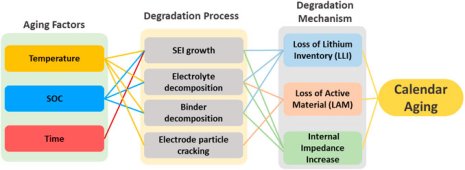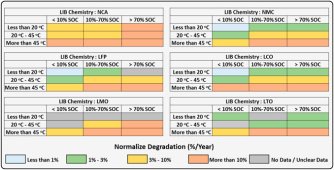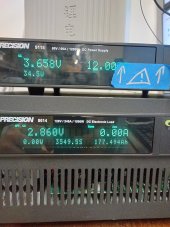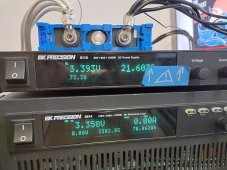sunshine_eggo
Happy Breffast!
Orac runs my system.
Dang... I was alive then, but that was not an option in Podunk, OK.
Orac runs my system.
They likely will die of calender aging as Will said in his video, thats cool.they represent hundreds of cycles
Our test subjects have been found. They are a CALB CA100 manufactured Jan 2014, A CALB CA180fi manufactured Oct 2013 and a Brand new CALB CAM72 manufactured April 2019. Both the CA series cells have an original testing capacity written on them. The CAM 72 cell seems to have never been used as it still has its terminal stickers attached. The plan is to simply follow the datasheet specs and see what they test. Initial voltage measurements read fine with 3.25-3.35v on each cell. Testing gear will be a B&K 9116 PSU and a B&K 8614 In battery test mode. No fancy discharge graphs this time sadly.Since it would also benefit the office, I've got approval to test some of the CALB CAM72 and CA series cells we have nib still at the office. These would have been purchased ~2015 for a now discontinued product. Will get back on how toasted or not they are.

well, full disclosure I don't have a tactical nuke in R+DThey likely will die of calender aging as Will said in his video, thats cool.
James, I was wondering, how EMP proof are they (EG4)? They are encased in a metal rack and the batteries themselves are in a metal casing?



we need to start a thread on this, science only. you're right, it's just a punchline too oftenRecently I was trying to look into what exactly causes calendar aging and what is physically happening to the battery, as most of the time people just say "calendar aging" and leave it at that.
Here is a dense article / paper that I tried to skim through, along with some charts from the article.

Assessment of the calendar aging of lithium-ion batteries for a long-term—Space missions
Energy availability is a critical challenge for space missions, especially for those missions designed to last many decades. Space satellites have depended on various combinations of radioisotope thermoelectric generators (RGTs), solar arrays, and batteries for power. For deep space missions...www.frontiersin.org
View attachment 146792
View attachment 146793
Our test subjects have been found.
View attachment 146758


The first two results are in

SoH is unknown as this is the first cycle this cell has seen, sadly we have no new production CAM72 cells, if that even exists, to compare.


